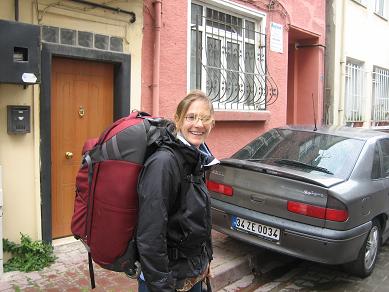Gesundheit
Wednesday, June 2nd, 2010As I mentioned a few posts ago, I have a few more topics in mind when it comes to healthcare on the road. My first piece of advice is plan ahead. There seem to be a lot of discussion forums and advice columns about what medications and immunizations you might need, but my most important tip is just to get whatever you need before you quit your job (and lose your health insurance). All the shots we needed were covered at no cost, however it did require some persistence to get through the system so start early.
Another thing I didn’t mention in the last post was about prescriptions. I had a few medications that I take regularly which you generally can’t get without a prescription and are pretty expensive without insurance. I was very concerned about trying to buy a year’s worth before we left. In most cases it’s not possible, but my insurance company allowed an extra 3 month “travel allowance“ before we left. For the rest of the supply, I stockpiled a few extra months ahead of time by getting my RXs filled as soon as they are eligible, which is often a few weeks early. It adds up over 6 months or so. In the end, we also made a pitstop back in the US in the middle of the trip and re-stocked everything then. There are some countries where you absolutely must have a prescription and it must be from a Dr. in that county. There are other countries where you just turn up at the pharmacy and tell them what you want. Once again… plan ahead.
Finally, I wanted to talk a little about health insurance while you are traveling. This decision is very personal and will have to be based on your situation in life. Are you generally healthy? Do you have enough money to cover any emergencies? What is covered by your existing domestic insurance? What are the worst case situations if do or don’t get it? What countries will you be visiting and what is the healthcare like there?
We had to consider that we are pretty healthy, but at age 40 there is a higher probability that something could go wrong than at 20. We also found that the insurance we had while working didn’t cover much outside the US. We had enough money saved to cover any basics while traveling, but if something major (think car accident or heart attack) happened, we would need some insurance and potentially evacuation coverage. After researching lot of different companies and policies, we ended up going with one offered by this company (they also offer kidnap and ransom insurance, but I hope no one reading this ever has need for that!): http://www.piu.org/medical/worldwide-major-medical-plan
High deductible/catastrophic coverage plans turn out to be fairly reasonable in price, However keep in mind that most only cover you when you are outside of the US. Finally, you might hear that there is reciprocal coverage in the EU. This might be true depending on where you are from. However, if you are from the US, it’s not the case and you will need some form of insurance or will have to pay the bills yourself. I wish everyone healthy travels!
